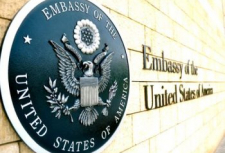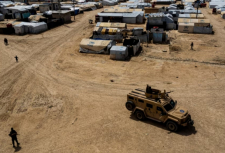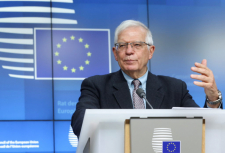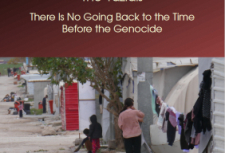Ezidi heraldry
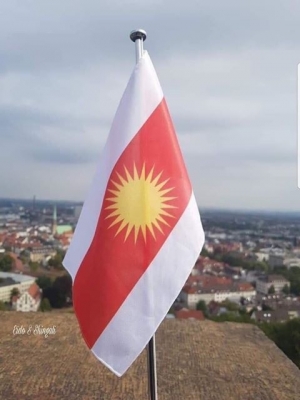
In recent years we have increasingly seen the use of the term Sidhan (Andijan) from the mouth of the Yazidi political, public and religious figures. It seemed that this term has long sunk into oblivion and became a relic of religious traditions and was used only by the clergy, but in reality it is not.
Ezdikhan (lit. "house of Yazidis") once meant "the country" in which the Yazidis lived. These were the territories of settlement of the Yazidis, which are now included in modern Iraq, Turkey, Syria and Iran. There was no public education under this name. There was a conditional division into regions (sanjaki, which means "district" and "banner"), and each of them had its own banner in the form of a metal image of a peacock" Taus " [1]. There were altogether seven such areas densely populated with Yazidi population: Shahan, Shangal (Sinjar), Hakkari, Haleb (Aleppo), Tavriz (Tabriz), Valete Hult (country of Hallow) and Sarhad. All of these areas and called Sidhana, but did not have clear boundaries. The term is also used in Yazidi sacred texts.
The Yazidi flag (banner)
Yazidi blood was shed under this flag (banner) during the recent events in Shangala. This flag has become a symbol of the resistance of the Yazidis. It is noteworthy that on 11 January in a speech of the commander of the Protection Force Shangala in the House of Yazidis of Oldenburg, a leading Yazidi organizations in Europe, at the initiative of the English philosopher Hasanga Brock with unceasing applause was raised this flag. In turn, the famous Yazidi figure, poet askare Boik urged all parties to respect this flag, because it is the banner of all Yazidis.
This flag was also recognized by the Yazidis of the former Soviet Union. So, after a recent meeting, the DSEGH the Board of the organization, the decision was made during marches, demonstrations, religious festivals and other events along with a banner the DSEGH and the state flag of Georgia to use the flag of Êzdikhana that had become a Holy symbol under which there was a struggle for the liberation of the Yazidi captives and Yazidi lands. This flag has become a symbol of defending the Yazidi honor, self-reliance, steadfastness, under which 4 months Yazidi militia defended the Yazidi Shrine of Sharfadin in Shangal.
Tags:
Ezidi heraldry

In recent years we have increasingly seen the use of the term Sidhan (Andijan) from the mouth of the Yazidi political, public and religious figures. It seemed that this term has long sunk into oblivion and became a relic of religious traditions and was used only by the clergy, but in reality it is not.
Ezdikhan (lit. "house of Yazidis") once meant "the country" in which the Yazidis lived. These were the territories of settlement of the Yazidis, which are now included in modern Iraq, Turkey, Syria and Iran. There was no public education under this name. There was a conditional division into regions (sanjaki, which means "district" and "banner"), and each of them had its own banner in the form of a metal image of a peacock" Taus " [1]. There were altogether seven such areas densely populated with Yazidi population: Shahan, Shangal (Sinjar), Hakkari, Haleb (Aleppo), Tavriz (Tabriz), Valete Hult (country of Hallow) and Sarhad. All of these areas and called Sidhana, but did not have clear boundaries. The term is also used in Yazidi sacred texts.
The Yazidi flag (banner)
Yazidi blood was shed under this flag (banner) during the recent events in Shangala. This flag has become a symbol of the resistance of the Yazidis. It is noteworthy that on 11 January in a speech of the commander of the Protection Force Shangala in the House of Yazidis of Oldenburg, a leading Yazidi organizations in Europe, at the initiative of the English philosopher Hasanga Brock with unceasing applause was raised this flag. In turn, the famous Yazidi figure, poet askare Boik urged all parties to respect this flag, because it is the banner of all Yazidis.
This flag was also recognized by the Yazidis of the former Soviet Union. So, after a recent meeting, the DSEGH the Board of the organization, the decision was made during marches, demonstrations, religious festivals and other events along with a banner the DSEGH and the state flag of Georgia to use the flag of Êzdikhana that had become a Holy symbol under which there was a struggle for the liberation of the Yazidi captives and Yazidi lands. This flag has become a symbol of defending the Yazidi honor, self-reliance, steadfastness, under which 4 months Yazidi militia defended the Yazidi Shrine of Sharfadin in Shangal.
Tags:
